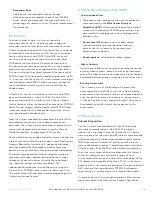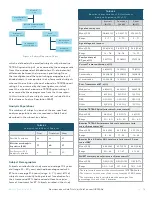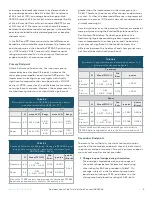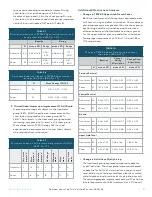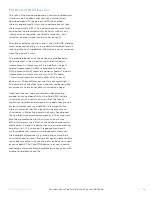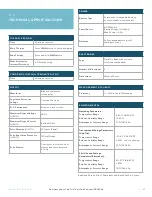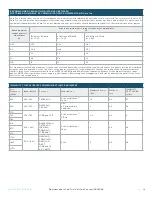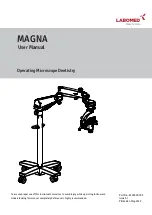
17
Questions about Cala Trio? Visit CalaTrio.com/HCPFAQs
LBL-5122 Rev C NOV 2019
»
TETRAS Archimedes Spiral Task
The TETRAS Archimedes Spiral Task requires
subjects to copy a spiral drawing in a 10-cm sized
square. At baseline, the investigator rated the spiral.
To determine if the subject met the inclusion criteria
of a minimum score of 2, the investigator rated the
spirals on the 5-point (
0-4
) TETRAS scale with
1-point resolution:
0
= normal
1
= slight: tremor barely visible.
2
= mild: obvious tremor
3
= moderate: portions of figure not recognizable.
4
= severe: figure not recognizable
Note:
The investigators were required to rate the spirals
using a 1-point resolution to assess inclusion into the
study, whereas the blinded raters could use a 0.5-point
resolution using the same scale for the assessment of
baseline and subsequent measures.
In order to account for multiplicity, the secondary
effectiveness endpoints were to be analyzed using
a stepwise gate-keeping approach, whereby each
subsequent hypothesis would only be tested if the
preceding null hypothesis was rejected and secondary
endpoint hypotheses would only be tested if the
primary endpoint null hypothesis was rejected.
•
The
secondary effectiveness endpoints
were:
- a significantly greater change in the treatment
group compared to the sham group in the TETRAS
Archimedes spiral rating during stimulation
compared to baseline
- a significantly greater self-reported improvement in
the treatment group
(CGI-I scale)
compared to the
sham group.
»
CGI-I Scale
The Clinical Global Impression-Improvement (CGI-I) scale
is a 7-point self-report scale that required the subject
to assess how much their tremor level has improved or
worsened relative to their baseline state prior to the
session. The subject reported their improvement on the
7-point CGI-I scale defined as follows:
1
= Very much improved
2
= Much improved
3
= Minimally improved
4
= No change
5
= Minimally worse
6
= Much worse
7
= Very much worse
•
Additional Exploratory Analyses:
»
Bain & Findley ADL Scale
To thoroughly document tremor severity, the
complete 25-item scale was administered at baseline.
A subset of 7 Bain & Findley ADL tasks that can be
performed unilaterally
(using one hand)
and do not
require the dominant hand were performed by the
subject at baseline and after the session to evaluate
functional improvements in activities of daily living.
These 7 tasks were:
- Use a spoon to drink soup
- Hold a cup of tea
- Pour milk from a bottle or carton
- Dial a telephone
- Pick up your change in a shop
- Insert an electric plug into a socket
- Unlock your front door with a key
The subjects
(blinded as to whether they received
stimulation or sham)
performed the tasks and rated
themselves from 1-4 on the following Bain & Findley
ADL scale:
1
= Able to do the activity without difficulty
2
= Able to do the activity with a little effort
3
= Able to do the activity with a lot of effort
4
= Cannot do the activity by yourself
»
TETRAS Upper Limb Tremor (ULT)
The TETRAS Upper Limb Tremor assessment included
three tasks to assess tremor severity: forward
outstretched posture, lateral “wing beating” posture,
and kinetic finger-nose-finger testing. At baseline,
each upper limb was assessed and scored individually
by the investigator using the TETRAS rating scale
(0-4 scale with 8-point resolution)
described below.
The TETRAS Upper Limb Tremor tasks were repeated
during and after stimulation, and scored by the
investigator using the same TETRAS rating scale.
0
= no tremor
1
= tremor is barely visible
1.5
= tremor is visible, but less than 1 cm
2
= tremor is 1- < 3 cm amplitude
2.5
= tremor is 3- < 5 cm amplitude
3
= tremor is 5- < 10 cm amplitude
3.5
= tremor is 10- < 20 cm amplitude
4
= tremor is > 20 cm amplitude
















